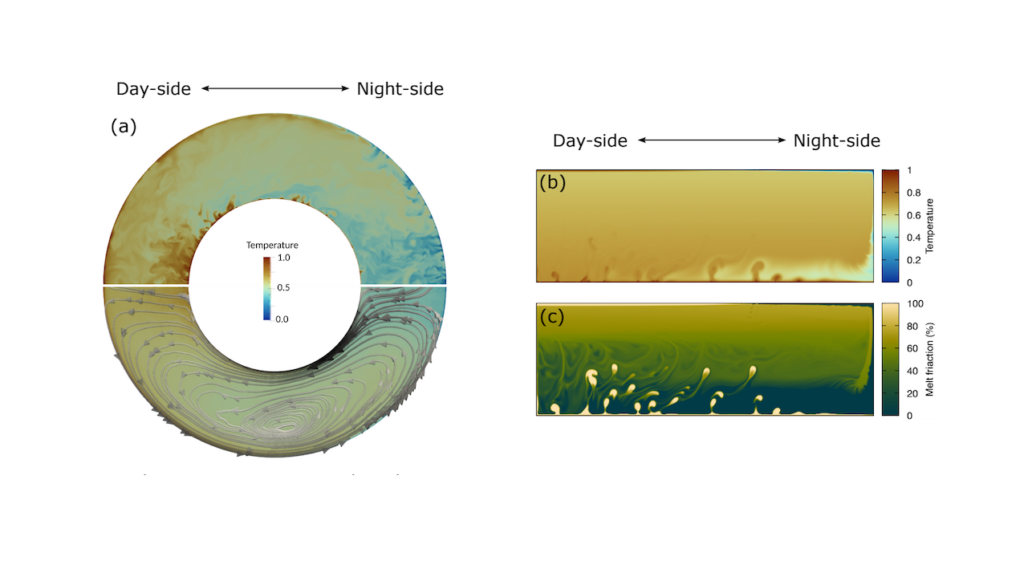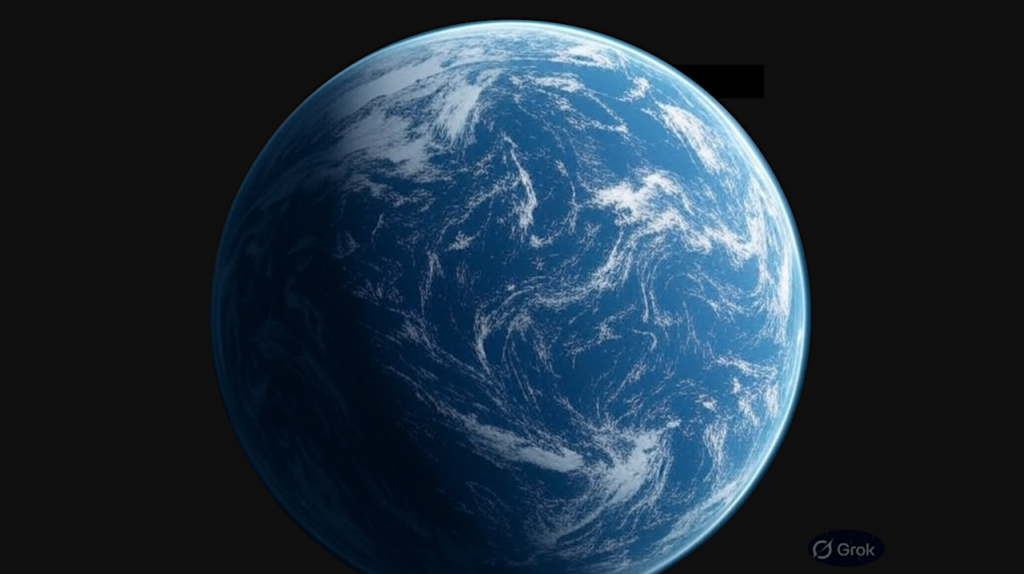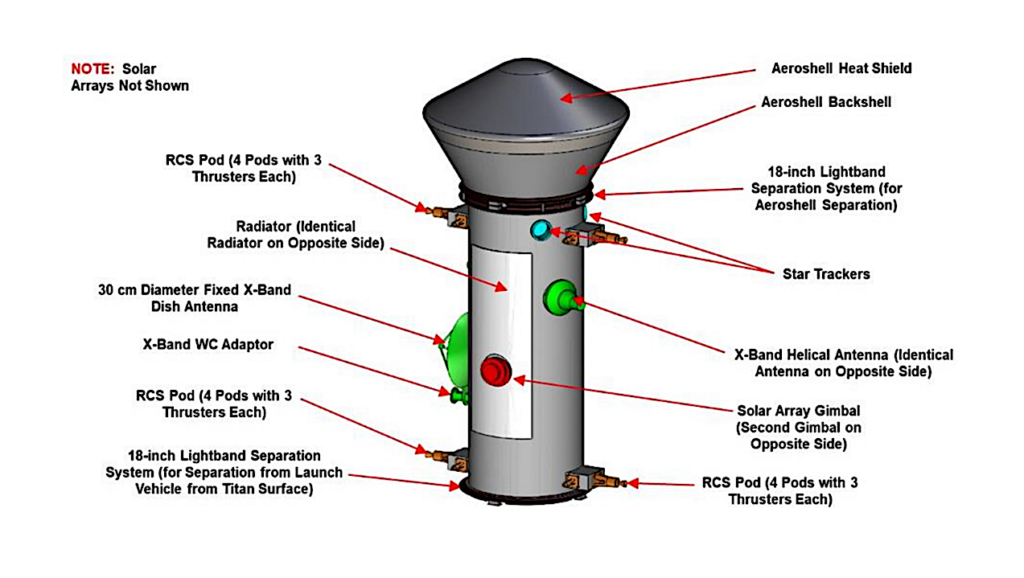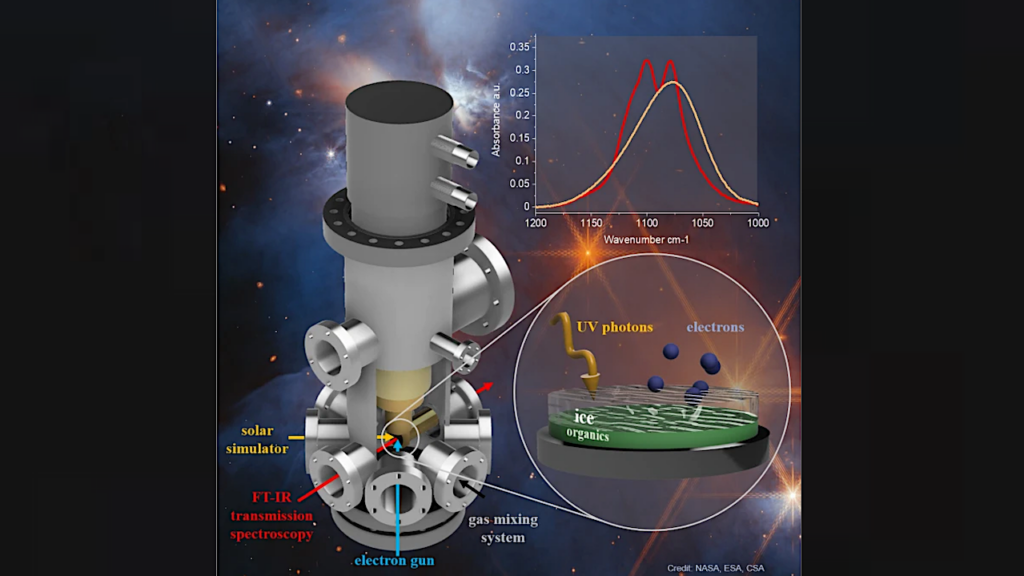SHARAD Illuminates Deeper Martian Subsurface Structures with a Boost from Very Large Rolls of the MRO Spacecraft

Throughout its mission, the Mars Reconnaissance Orbiter (MRO) has often rolled about its along-track axis by up to 28° to partially compensate for the suboptimal location of the Shallow Radar (SHARAD) antenna along an edge of the spacecraft that is opposite the imaging payload deck, thereby enhancing the signal-to-noise ratio (S/N) of echoes returned from the surface.
After recent modeling work predicted that a much larger roll would improve the S/N by ~10 dB relative to nadir-pointed observing, MRO began a limited series of 120° roll maneuvers to test the effects on radar sounding. Three such SHARAD very-large-roll (VLR) observations have been acquired since May 2023, and they show dramatic improvements in signal clarity and depth of penetration, with S/N increasing by 9, 11, and 14 dB over that of nearly coincident observations at 0° roll angle.
In low dielectric terrains, the first and second VLR observations enabled basal detections at depths previously unachievable, reaching depths of 800 m in Medusae Fossae materials and 1500 m through the ice of Ultimi Scopuli, respectively. The second VLR observation also obtained enhanced reflections throughout the ice stack.
In the higher dielectric terrain of Amazonis Planitia, the third VLR observation improved continuity of a dipping subsurface interface, but it revealed neither an extension of the interface to greater depths nor any deeper interfaces. The MRO mission intends to obtain more SHARAD VLR observations of polar terrains and of midlatitude glacial and ground ices, sediments, and volcanics.

Comparison of the first very-large-roll SHARAD observation (VLR1) with nearly coincident portions of other observations taken at lower roll angles. (a) Strip map showing the topography along the ground tracks of the SHARAD observations (MOLA shaded relief), with the white center line corresponding to VLR1, the red dashed lines corresponding to observations 8020401 and 7787101, and the blue dotted lines corresponding to observations 5725702, 7822602, and 2028301. (b) Estimated along-track S/N for VLR1 (black line), observations 8020401 and 7787101 (red line), and observations 5725702, 7822602, and 2028301 (blue line). S/N values range from 8 dB to 39 dB. The mean difference between the black and blue lines is 9 dB. (c) Radargram for VLR1 acquired at 120° roll angle. (d) Radargrams for segments of observations 8020401 and 7787101 acquired at ~28° roll angle. (e) Radargrams for segments of observations 5725702, 7822602, and 2028301 acquired at 0° roll angle. (f) Cluttergram for VLR1. Power in the radargrams is scaled from -3 dB to 24 dB. White arrows in (c–f) show where VLR1 achieved greater depth of penetration than in other observations. The lack of a corresponding feature in the cluttergram provides confidence in a subsurface source of the reflection. — astro-ph.EP
Nathaniel E. Putzig, Gareth A. Morgan, Matthew R. Perry, Bruce A. Campbell, Jennifer L. Whitten, Fabrizio Bernardini, Alessandro DiCarlofelice, Piero Tognolatti, Pierfrancesco Lombardo
Comments: Accepted manuscript with 21 pages, 7 figures
Subjects: Earth and Planetary Astrophysics (astro-ph.EP); Instrumentation and Methods for Astrophysics (astro-ph.IM); Geophysics (physics.geo-ph)
Cite as: arXiv:2505.21810 [astro-ph.EP](or arXiv:2505.21810v2 [astro-ph.EP] for this version)
https://doi.org/10.48550/arXiv.2505.21810
Focus to learn more
Related DOI:
https://doi.org/10.3847/PSJ/addbe1
Focus to learn more
Submission history
From: Nathaniel Putzig
[v1] Tue, 27 May 2025 22:35:32 UTC (8,586 KB)
[v2] Thu, 29 May 2025 01:44:56 UTC (8,586 KB)
https://arxiv.org/abs/2505.21810
Astrobiology,








